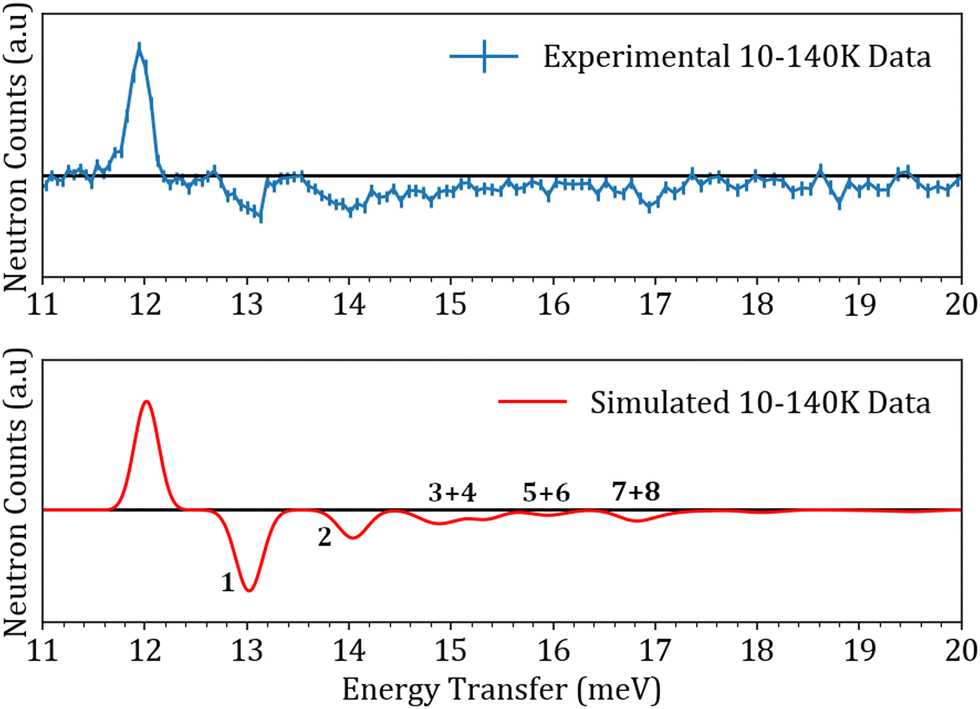Most people are familiar with fullerene, commonly known as bucky balls or Buckminster fullerene, C60, as a hollow cage made of 60 carbon atoms. But what if we could trap tiny atoms or molecules inside these cages? These fascinating compounds, called endofullerenes, have become a focus of scientific exploration. By performing "molecular surgery," synthetic chemists can create an opening in the fullerene cage, allowing them to insert specific atoms or molecules before sealing it back up. This breakthrough has enabled the synthesis of various endofullerenes, like H2@C60, H2O@C60, He@C60, and CH4@C60, amongst others.
Studying confined particles is crucial for advancing our understanding of quantum mechanics. Endofullerenes offer an ideal textbook system for such investigations. At extremely low temperatures, quantum effects dominate the dynamics of the trapped molecules. Scientists have employed various spectroscopic techniques, including inelastic neutron scattering (INS), infrared spectroscopy, and nuclear magnetic resonance (NMR), to explore these phenomena. Numerical calculations have also been utilized to compute the INS spectrum for different endofullerenes. These calculations play a vital role in explaining the observed features during INS experiments, leading to a solid theoretical model that explains the interactions at play within these systems.
 Among the endofullerenes, noble gas endofullerenes have the simplest molecular structure. They involve a single atom confined within a C60 cage, experiencing van der Waals interactions with the carbon atoms. Van der Waals interactions occur when neighbouring atoms come close enough for their outer electron clouds to barely touch. Recent breakthroughs in synthesis methods have enabled the production of highly pure helium endofullerenes with high filling factors, making them suitable for neutron scattering investigations.
Among the endofullerenes, noble gas endofullerenes have the simplest molecular structure. They involve a single atom confined within a C60 cage, experiencing van der Waals interactions with the carbon atoms. Van der Waals interactions occur when neighbouring atoms come close enough for their outer electron clouds to barely touch. Recent breakthroughs in synthesis methods have enabled the production of highly pure helium endofullerenes with high filling factors, making them suitable for neutron scattering investigations.
Researchers at the ISIS Neutron and Muon Source, Institut Laue-Langevin (ILL), and the University of Southampton investigated the translational modes of both 3He and 4He atoms using INS and terahertz spectroscopy, with the experimental results interpreted using an anharmonic oscillator potential to describe the potential energy surface (PES). They focused on studying the interaction between a helium atom and the C60 cage to establish an accurate theoretical model. They compared experimental INS data with simulations based on an anharmonic oscillator potential energy surface description. The INS measurements were conducted using a 3He@C60 sample (filling factor of 45%) and a 4He@C60 sample (filling factor of 35%), both in powder form. The PANTHER instrument at ILL, a direct geometry thermal neutron spectrometer, and the TOSCA instrument at ISIS, an indirect geometry vibrational spectrometer, were utilized. These instruments provide complementary information, with PANTHER offering a global view of the available (Q,ω) space and TOSCA focusing on a narrower area with better resolution.
The PANTHER measurements provided data sets as a function of both energy and momentum transfers, while TOSCA experiments focused on energy transfer alone at three different temperatures, allowing higher energy states of the trapped 3He atom to be populated. The temperature effects enriched the spectra by accessing higher energy levels. The use of the model-free anharmonic oscillator model allowed the qualitative and quantitative reproduction of the complex experimental data, offering a solid theoretical framework to describe the interactions at play in the 3He@C60 endofullerene system.
Mohamed Aouane, instrument scientist at ISIS, explains ‘The expertise and enthusiasm of the various people involved in these experiments both at ISIS and ILL, coupled with the cutting-edge neutron instrumentation, has opened new horizons for neutron scattering on small samples like 3He@C60. This type of samples would have been impossible to measure just a few years ago.'
This research highlights the complementarity between different neutron spectrometers. The insights gained from these studies not only deepen our understanding of quantum dynamics but also have broader implications. Understanding confinement effects and interactions in endofullerenes can guide the development of new materials and pave the way for applications in fields such as quantum computing. By unravelling the secrets of these tiny, trapped atoms, scientists continue to push the boundaries of both synthetic chemistry and neutron instrumentation both at ISIS and ILL as the samples handled during these experiments were in the milligram range and contained a highly absorbing element in 3He.
Further information
The full paper can be found at online at DOI: 10.1039/D3CP02253F
